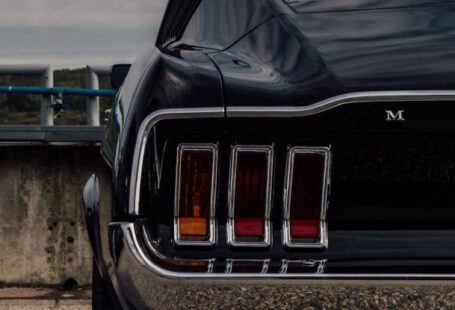The Ford Mustang: A Revolutionary Icon in American Car Culture
When it comes to American car culture, one vehicle stands out above the rest—the Ford Mustang. Since its debut in 1964, the Mustang has left an indelible mark on the automotive industry and has become an icon of American design and innovation. From its powerful performance to its sleek aesthetics, the Mustang has influenced the way we perceive and appreciate cars in the United States. Let’s delve into how this iconic vehicle has shaped American car culture over the decades.
The Birth of a Legend
The Ford Mustang was introduced to the public on April 17, 1964, at the New York World’s Fair. With its sporty design and affordable price tag, the Mustang captured the hearts of car enthusiasts across the country. The timing of its release was impeccable, coinciding with the rise of the youth culture in the 1960s. The Mustang was marketed as a car that embodied freedom, independence, and adventure—qualities that resonated with the American public during this era of change and revolution.
Setting the Standard for Muscle Cars
One of the key ways the Mustang influenced American car culture was by setting the standard for muscle cars. With its powerful V8 engine and distinctive fastback design, the Mustang offered an exhilarating driving experience that was unmatched by other vehicles of its time. The Mustang’s performance capabilities made it a favorite among speed enthusiasts and paved the way for the muscle car craze that would dominate the automotive landscape in the following decades.
Iconic Design and Customization
The Mustang’s iconic design has also played a significant role in shaping American car culture. From its signature galloping horse emblem to its distinctive grill and body lines, the Mustang is instantly recognizable on the road. The car’s sleek and sporty aesthetics have inspired countless imitators and have set the bar for design excellence in the automotive industry. In addition, the Mustang’s popularity has led to a thriving aftermarket industry focused on customization, allowing owners to personalize their vehicles to reflect their own unique style and personality.
Cultural Impact and Media Influence
Beyond its performance and design, the Mustang has had a profound cultural impact on American society. The car has been featured in countless movies, TV shows, and songs, solidifying its status as a pop culture icon. From Steve McQueen’s high-speed chase in “Bullitt” to the Mustang’s role in the classic film “Gone in 60 Seconds,” the car has become synonymous with power, speed, and rebellion. The Mustang’s presence in popular media has helped cement its place in the hearts and minds of car enthusiasts around the world.
Sustaining a Legacy
Over the years, the Ford Mustang has continued to evolve and adapt to changing trends in the automotive industry. From the introduction of fuel-efficient engines to the incorporation of advanced technology, the Mustang has remained a relevant and sought-after vehicle for over five decades. The car’s ability to stay true to its roots while embracing innovation has allowed it to maintain its status as a cultural icon and a symbol of American ingenuity.
In conclusion, the Ford Mustang’s impact on American car culture cannot be overstated. From its groundbreaking debut in the 1960s to its enduring legacy in the present day, the Mustang has shaped the way we view and appreciate cars in the United States. With its powerful performance, iconic design, and cultural significance, the Mustang will always hold a special place in the hearts of car enthusiasts and collectors alike.





